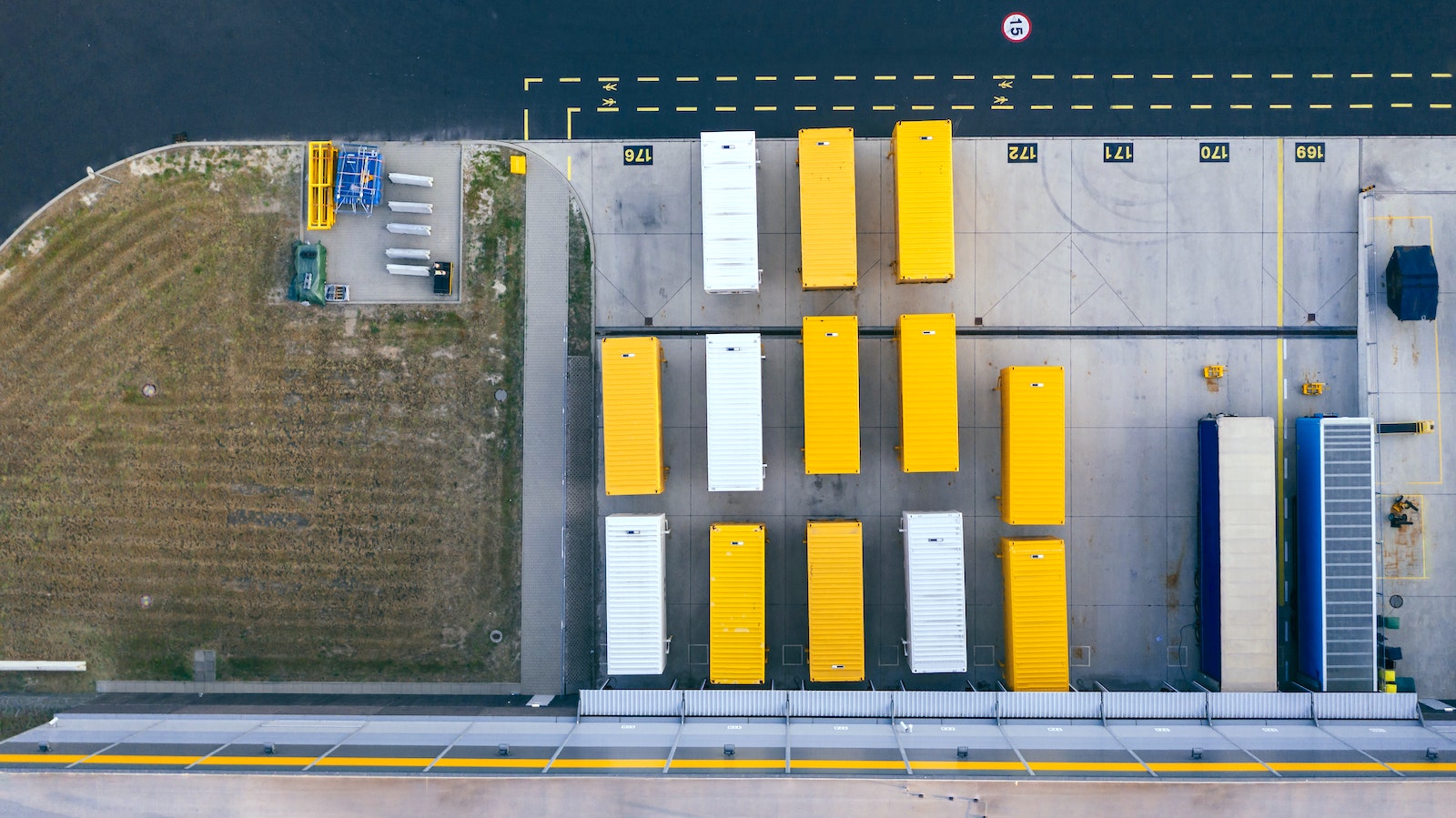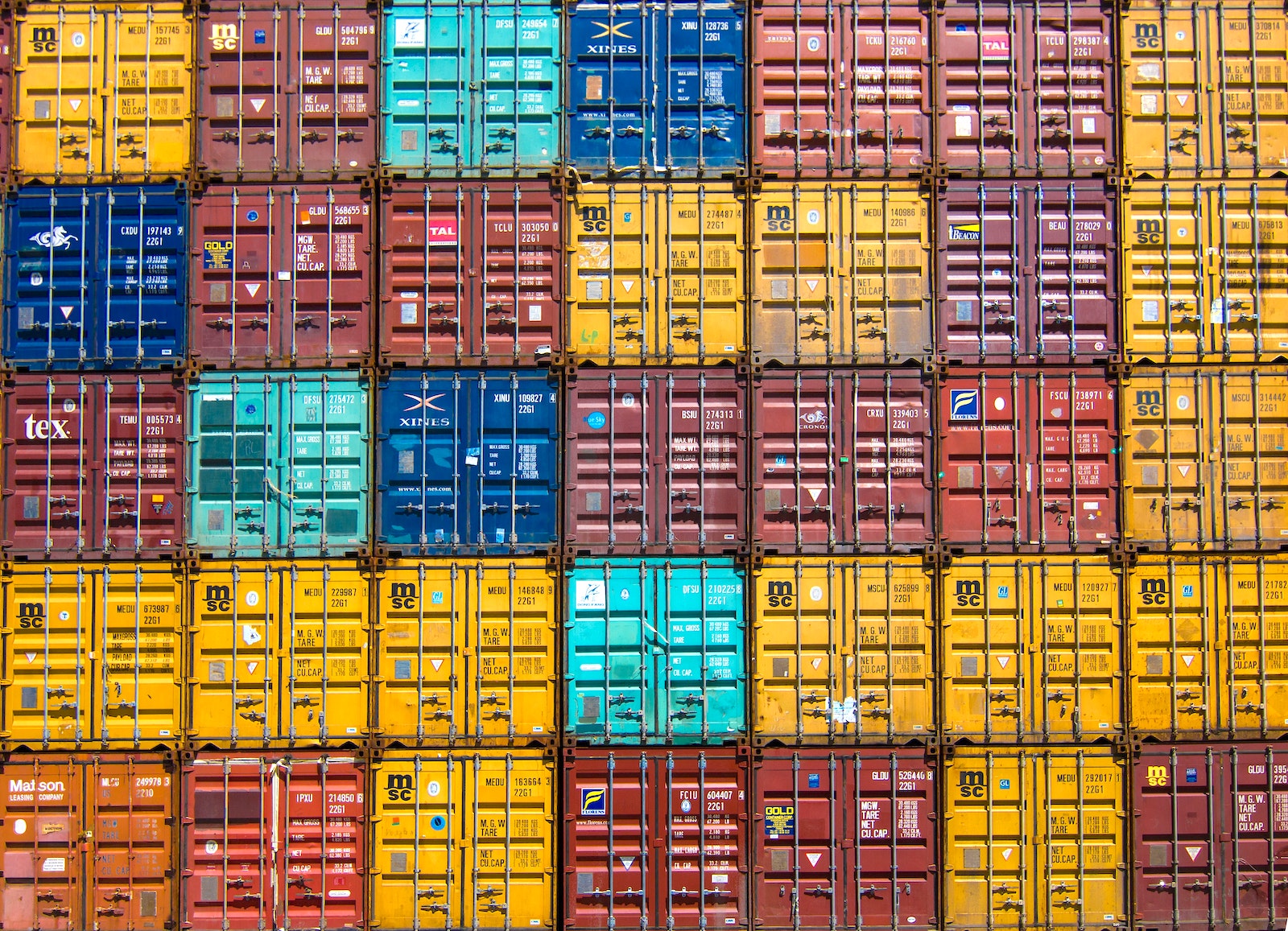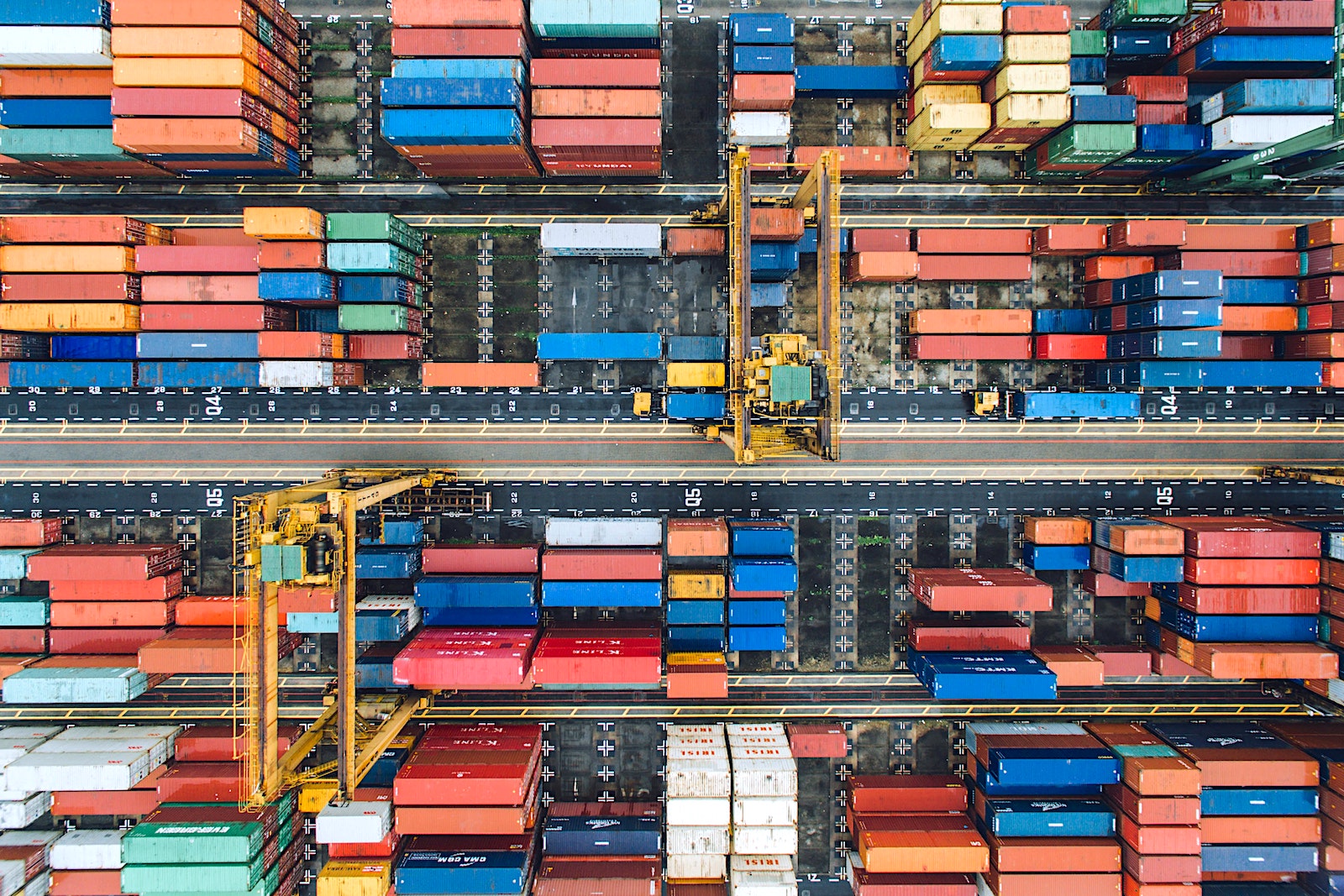Table of Contents
** Minutes
What is a distribution centre?
4 differences between a distribution centre vs. a warehouse?
What are the essential distribution centre processes?
The concept of a traditional warehouse is simple; it’s a large building that stores bulk quantities of product or ecommerce inventory.
In order for a business to grow and compete with other brands that sell similar items, they need more than just inventory storage — they need expertise, technology, and processes to help streamline their ecommerce supply chain.
That’s why distribution centres are replacing traditional warehousing. Rather than businesses storing inventory in a warehouse and handling fulfilment themselves, ecommerce businesses rely on distribution centres that provide value-added logistics services to meet customer demand.
Distribution centres offer the fulfilment infrastructure and technology that help online stores offer affordable, accurate, and fast shipping.
In this guide, you will learn how distribution centres work, what services they provide, and how they support direct-to-consumer (DTC) brands.
What is a distribution centre?
A distribution centre is a specialized warehouse that serves as a hub to strategically store finished goods, streamline the picking and packing process, and ship goods out to another location or final destination. Often used interchangeably with the term fulfilment centre, distribution centres handle order fulfilment and other value-added services.
4 differences between a distribution centre vs. a warehouse?
“Distribution centre” and “warehouse” are terms many people think are one and the same, but there are some key differences.
At its core, a traditional warehouse only stores inventory (typically on a long-term basis), where a distribution centre is a facility that briefly stores inventory until orders get fulfiled and then sent to their next or final destination.
Here is a deeper dive into the main differences between a distribution centre and a warehouse:
1. Storage management
Warehouses offer inventory storage. When you think of a traditional warehouse, you think of a large industrial building stocked with shelves of inventory.
Some retailers will own or lease a warehouse to store inventory, or leverage a co-warehousing space that allows multiple businesses to store inventory and only use the space they need.
Distribution centres are far more agile. They are typically operated by third-party logistics (3PL) companies that offer warehousing solutions as well as fulfilment capabilities. While inventory is stored in a distribution centre (often, not for long), it streamlines the fulfilment process and ships orders to customers efficiently.
2. Customer-centric processes
Warehouses provide space and don’t offer value-added services for customers. Just like a residential storage unit, you pay for the space you need.
Distribution centres go beyond storage services to help ecommerce businesses optimise their supply chain. They offer services and expertise in inbound and outbound logistics, from receiving inventory to shipping orders directly to consumers. This provides a more customer-centric approach, as services like packing orders for a good unboxing experience or managing returns can be done.
Distribution centres operated by 3PLs can provide customers with dedicated support as well as the infrastructure, technology, resources, and best practices to save on both logistics costs and time by taking care of time-consuming logistics tasks.
3. Shipping workflows
Warehouses typically don’t offer shipping solutions and services to ship each order to customers or other retailers. To get inventory out of a warehouse, you may need to arrange freight yourself.
Distribution centres partner with major shipping couriers that pick up orders daily, so orders can be shipped as soon as possible.
A tech-enabled 3PL streamlines the shipping process to reduce shipping costs and speed up last-mile delivery. They offer direct integrations with ecommerce platforms to send orders automatically to the nearest distribution centre. This connection enables each customer order to be automatically sent to a fulfilment centre to get picked, packed, and shipped out.
For example, ShipBob fulfils orders the same day that are imported by noon local time, so the couriers can pick them up and ship them out quickly. We also enable faster shipping times by analising optimal delivery routes and fulfiling orders from the most efficient location.
Once shipped, order tracking info is pushed back to the ecommerce store and shared with the customer.
4. In-house processes
Warehouses are typically just designed to store stuff, and so they lack in-house processes. This means they don’t offer ways to help you save on storage costs or find other ways to optimise your retail supply chain by implementing automation and technology. In fact, they often don’t need a technology piece and only need to bill based on how much space you use.
Distribution centres focus on efficiency, order accuracy and speed by implementing best practices and technology, and many aggregate fulfilment data to continuously look for ways top improve the entire ecommerce fulfilment process.
Technology is key here, as many 3PLs that operate distribution centres offer direct integrations with ecommerce platforms that connect with their warehouse management system (WMS) to automatically send orders to the closest distribution centre to be picked, packed, and shipped.
By connecting your online store to a 3PL’s technology, orders are automatically sent to the closest distribution centre where inventory is stored. From there, the retail fulfilment process begins and a fulfilment expert picks, packs, and ships the order to your customer for you.
What are the essential distribution centre processes?
A distribution centre’s processes are designed to quickly process orders by picking, packing, and shipping packages to your customers in the most-effective way. Here is what a typical distribution centre process looks like:
1. Receiving and storing inventory
Warehouse receiving and then storing inventory refers to delivering, unloading, and optimising storage space in one or more distribution centre locations.
A well-established warehouse receiving process can make the inventory management and fulfilment cycle easier, more cost-effective, and more efficient. But it takes a lot of effort as it involves several important steps including having proper documentation that must be done right to avoid issues later on.
Once all inventory is unloaded and inspected, the next step is to store the received inventory. Depending on the size and quantity of products, inventory can be stored either on a palette, a shelf, or a bin.
2. Picking and packing
A tech-enabled distribution centre managed by a 3PL works to optimise the warehouse picking process. In most cases, a warehouse management system (WMS) is used to automatically assign similar orders with inventory in the same area of the warehouse, so pickers can reduce the number of steps required to pick orders. This process creates a more efficient workflow by improving speed and order accuracy.
From there, a picking list is generated, which includes the items ordered, quantity, and where each product is located in the distribution centre. Each unit that’s picked is scanned from the inventory container or storage space so inventory counts are updated in real time, providing up-to-date stock levels for the business.
When all items in an order have been picked, the next step is to securely pack them and affix a shipping label.
3. Restocking
Efficient inventory restocking, also known as inventory replenishment, is an important inventory management process. You want to make sure you always have enough inventory stored and ready to be picked and packed as soon as each order comes in.
Stockouts and backorders are common inventory issues that occur when you fail to track inventory levels, forecast demand, and restock products efficiently to meet demand.
If you’re using multiple warehouses, then failing to restock items (especially high-demand products) at one of your locations can result in a split shipment (i.e., an order with multiple items that get fulfiled and shipped separately).
Distribution centres operated by 3PLs help you avoid understocking (and overstocking) using inventory management software and other inventory automation tools. This provides you with data and visibility into real-time inventory levels in various locations, so you can easily stay on top of inventory control, automate reorder points, and track inventory trends.
4. Returns management
A great returns management process can significantly improve your button line by increasing customer satisfaction by 12% and decreasing logistics costs by 4%.
If you leverage a warehouse, you would need to implement your own system to process returns and have your staff put items back on shelves quickly.
By using a distribution centre, you have the option to lean on a distribution partner or 3PL partner to handle returns for you. For instance, ShipBob simplifies returns management with direct integrations to leading returns platforms such as Happy Returns and Returnly.
How ShipBob’s distribution centres benefit ecommerce stores
ShipBob offers distribution centres located across the US, Canada, Europe, the UK, and Australia (with more locations continuously being added). ShipBob’s entire distribution network is powered by best-in-class fulfilment technology.
ShipBob makes it easy to optimise fulfilment and shipping by saving you time, money, and energy. With a growing distribution network, you’re able to split inventory across multiple distribution centres to reduce shipping costs and speed up transit times — all by doing less.
Read on to learn more about the benefits of ShipBob’s distribution network.
1. Reduces overall costs
Warehouse management can get costly and time-consuming (think about hiring and training staff, investing in technology, purchasing equipment, managing inventory, and shipping orders yourself).
It’s not uncommon for young ecommerce brands to assume that outsourcing logistics to a 3PL like ShipBob is costly. The truth is, partnering with ShipBob and utilising multiple distribution centres, their technology, and data and resources can save you on costs in the long run.
Yes, you will have to pay for fulfilment costs. However, ShipBob’s physical distribution model is designed to help you save on shipping while speeding up transit times as you expand into markets. You also save on warehousing fees by only utilising the storage space you need and leaning on ShipBob’s staff to take care of the logistics.
“Because our products are low-cost, it’s important that shipping costs are low. We started in ShipBob’s east coast fulfilment centre, which was local for us. We have since moved to a more central fulfilment centre location in Chicago to improve transit times and shipping costs.”
Manuel de la Cruz, CEO at Boie
ShipBob also partners with major shipping couriers to negotiate bulk discounts and provide better rates for expedited shipping, 2-day shipping, international shipping, and more.
2. Gives you back time
When you choose to outsource fulfilment instead of investing in your own warehouse, you’re given access to a robust logistics infrastructure and a team that takes care of logistics operations for you.
With ShipBob, you no longer have to spend time picking and packing boxes, managing inventory, and work on other time-consuming logistics tasks. This allows you to focus on higher-dollar activities, while we provide necessary logistics resources for your business to scale.
“ShipBob pulls me out of having to deal with the physical labour side of the business, which allows me more time to focus on making and marketing music. It’s an automated flow that lets me spend less time on things that aren’t making money.”
Lee Nania, Founder of SubSubmarine
3. Technology that integrates across all platforms
ShipBob’s native technology seamlessly integrates with your ecommerce platform and they have partnerships with the leading technology solutions in ecommerce. See the full list of ShipBob partners here.
Once you sync your store with our technology, orders that are placed on your online store are automatically sent to ShipBob. Once we receive an order, you can maintain control and visibility into the entire inventory and order management process all from one dashboard.
To help your business grow, you get access to advanced data and analytics at no extra cost, so you can keep us accountable on fulfilment performance and make better informed decisions using insights on shipping, inventory forecasting, inventory allocation, and more.
For a more customised solution, ShipBob’s Developer API makes it easy to plug ShipBob’s technology into your supply chain.
“Unlike other 3PLs, ShipBob has a Developer API in addition to their native integrations, which gives us the ability to have strict control over the fulfilment process and is a huge plus for us.”
4. Experienced partner to help you grow
Ecommerce fulfilment becomes more challenging to manage as your business grows. By partnering with ShipBob, you gain access to a large team of experts who are dedicated to helping scale your business. Since partnering with ShipBob, our customers have seen cost savings of 13% to their bottom line, grown 1,000% YoY, and more.
ShipBob continues to expand our international fulfilment network, improve processes, and invest in the latest technology and equipment.
“I felt like I couldn’t grow until I moved to ShipBob. Our old 3PL was slowing us down. Now I am encouraged to sell more with them. My CPA even said to me, ‘thank god you switched to ShipBob.’”
Courtney Lee, founder of Prymal
5. Faster order processing and shipping
When you sync your online store with ShipBob’s technology, you enable faster order processing, so the fulfilment and shipping stage can begin right away. Since order fulfilment is more efficient with ShipBob, the shipping process is faster.
Our carrier partners pick up orders daily directly from our distribution centres. And, if you leverage multiple distribution locations, you can offer shipping incentives including 2-day ground shipping without having to pay for expedited air.
“Last time we shipped our own packages, it took us 3 weeks. It took ShipBob less than 2 days. I couldn’t wait to delegate this business over, because the stress level was through the roof. I am just so grateful for ShipBob.”
Andrea Hamilton, founder of The Finer Things 1920
Conclusion
A traditional warehouse isn’t your only option. ShipBob is a leading logistics service provider that offers warehousing, fulfilment capabilities, and an international distribution network. We focus on helping you save money, meet customer demand, and save time so you can focus on growing your business.
To learn more about how ShipBob’s distribution centres work, click the button below.
Have your own warehouse?
Your ecommerce brand can now implement ShipBob’s best-in-class warehouse management system (the same system that powers ShipBob’s fulfilment network!) in your own warehouse.
Using ShipBob’s WMS, your brand can manage your logistics from a single platform. With built-in automations, flexible picking options, and turnkey integrations with major ecommerce platforms and tools, the ShipBob WMS streamlines everything from receiving to shipping, so your brand can both improve efficiency and reduce errors throughout your supply chain.
For brands looking to scale internationally, ShipBob even offers a hybrid solution where merchants can employ ShipBob’s WMS technology in their own warehouses while simultaneously leveraging ShipBob’s fulfilment services in any of ShipBob’s fulfilment centres across the US, Canada, Europe, and Australia to improve cross-border shipping, reduce costs, and speed up deliveries.
Distribution centre FAQs
Here are common asked questions related to distribution centres and how they are different from traditional warehousing.
What does a distribution centre do?
Distribution centres offer inbound and outbound logistics services for ecommerce brands including warehousing, fulfilment, and shipping capabilities. A single distribution centre is often part of a bigger distribution network that allows inventory to be spread across different location, which speeds up transit times and reduces shipping costs.
What is the difference between a warehouse and a distribution centre?
“Distribution centre” and “warehouse” are terms used interchangeably, but a distribution centres handles fulfilment and storage, where a traditional warehouse solely stores inventory.
How long does a package stay at a distribution centre?
A package that is ready to be shipped should only stay in a distribution centre for short period of time. If orders are placed before a certain time (e.g., noon), then in most cases, distribution centres are equipped to have packages shipped the same day when couriers come pick up.
How do distribution centres work?
A distribution centre works by receiving inventory from a company, which is then stored in a way to enable efficient picking and packing. Distribution centres are often operated by 3PLs that make it easy for merchants to connect their online store with their technology. After a shopper completes a purchase on an ecommerce store, inventory is picked and boxes are packed and then labelled for shipment.



